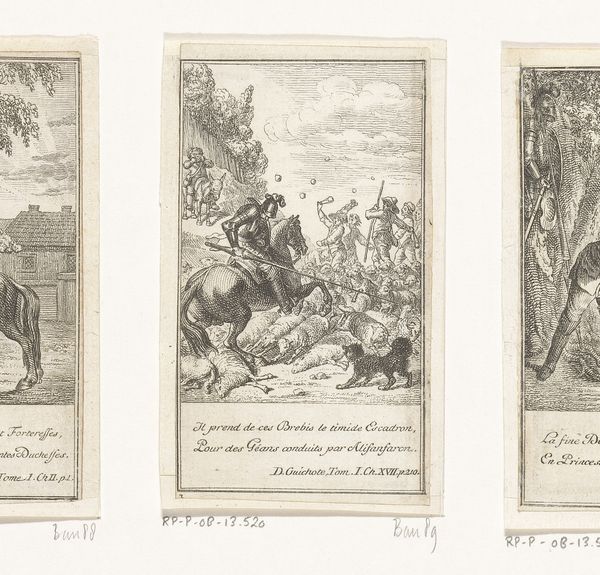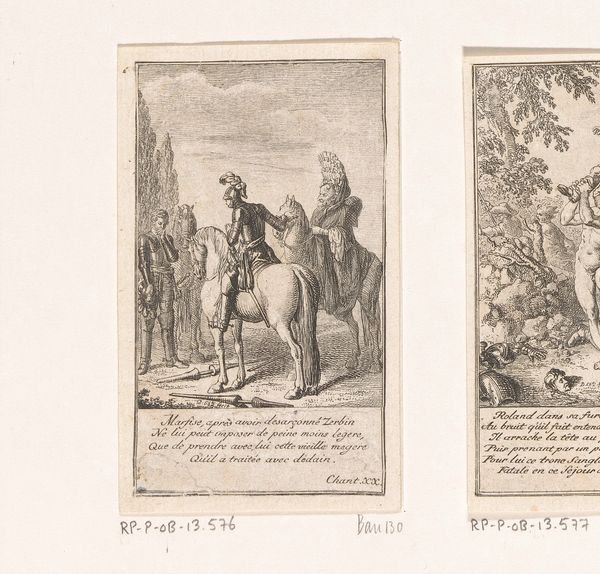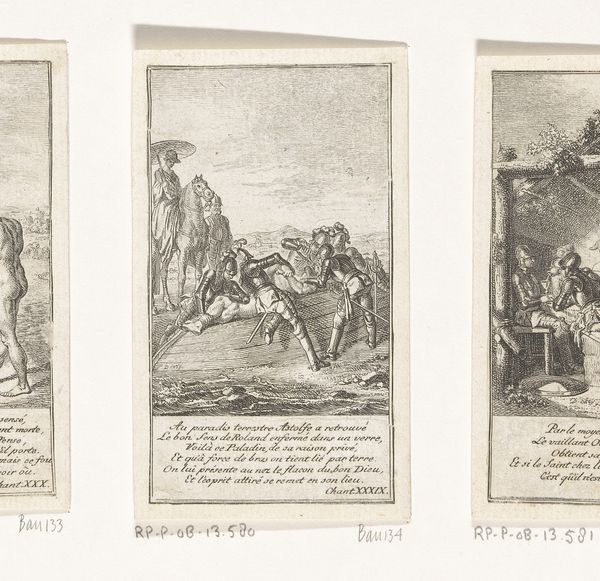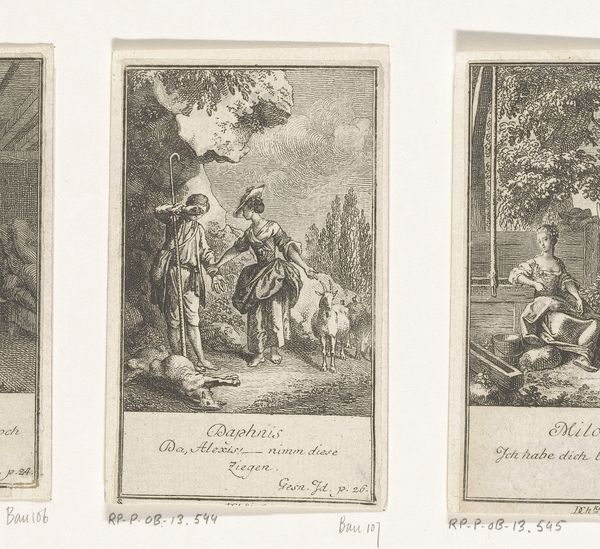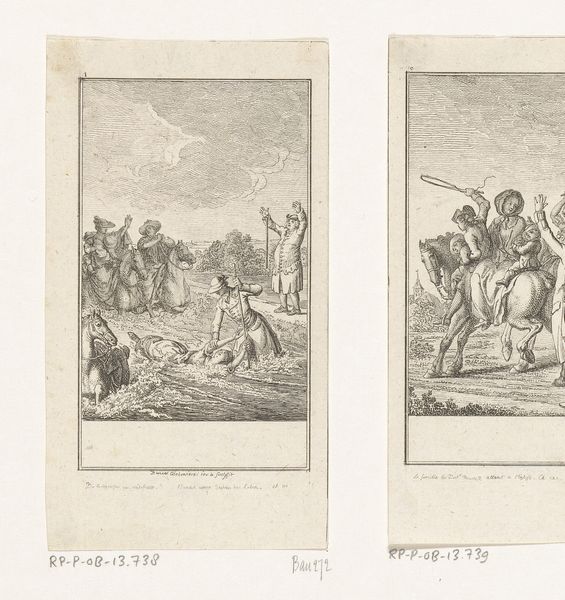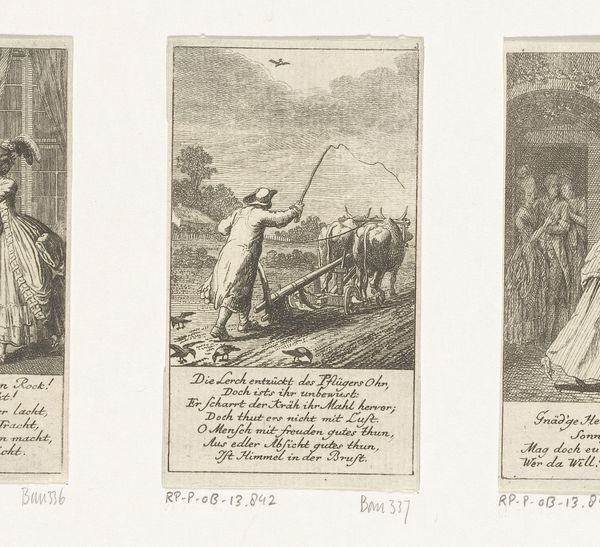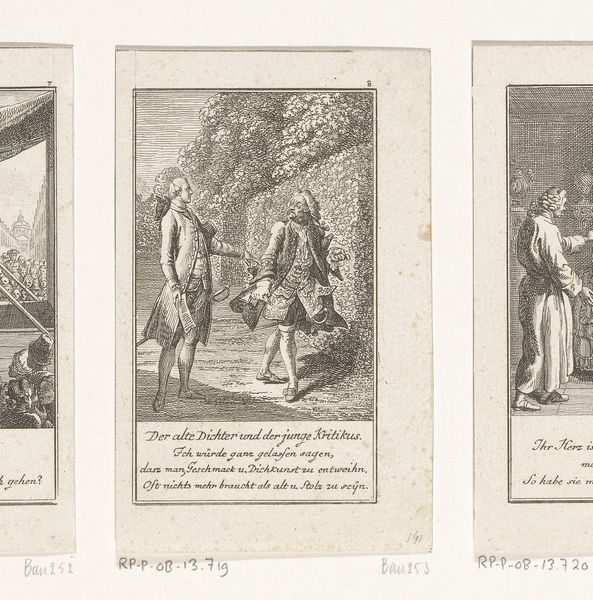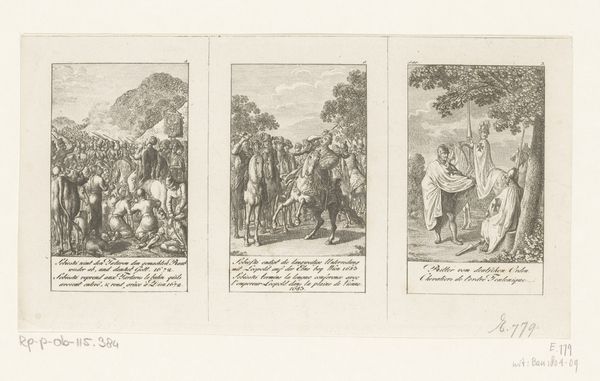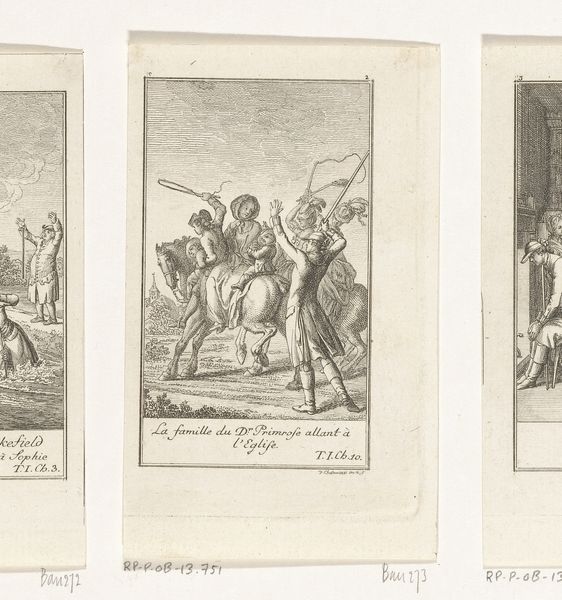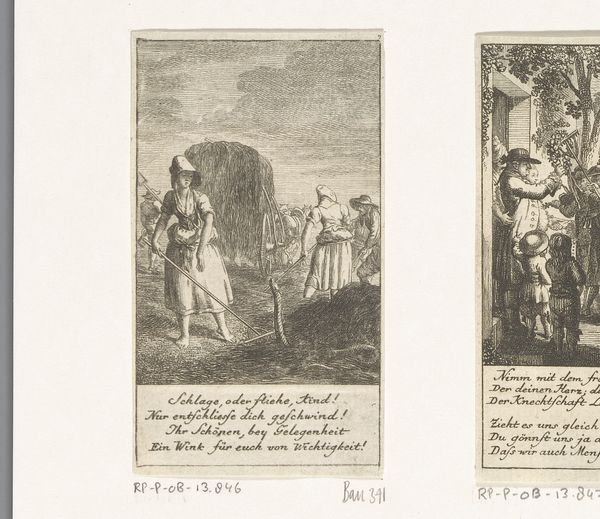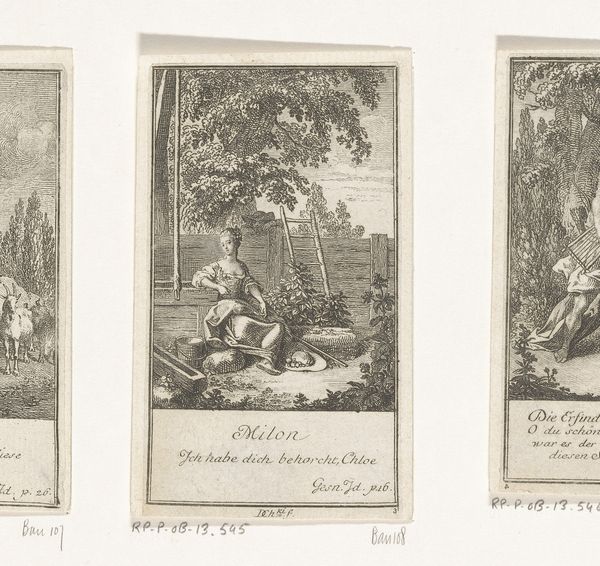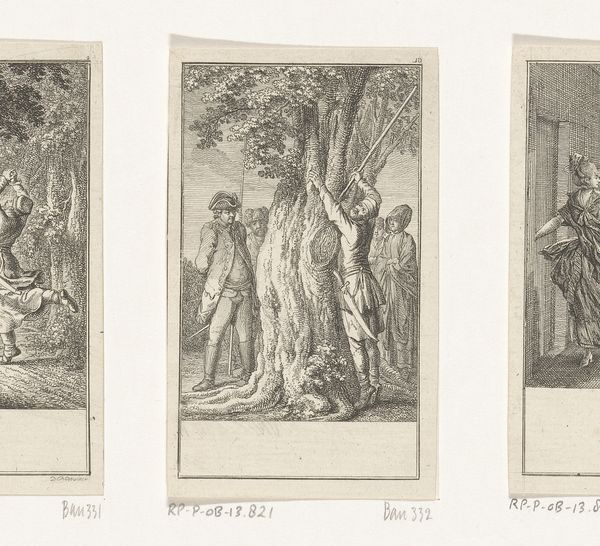
Dimensions: height 95 mm, width 55 mm
Copyright: Rijks Museum: Open Domain
Editor: So this is Daniel Nikolaus Chodowiecki’s "Don Quichot op de bruiloft van Kamacho," made in 1770. It’s an etching, quite small and intricate. It strikes me as being quite theatrical, almost like a scene from a play. What catches your eye when you look at it? Curator: The production of prints like these served a burgeoning market. Chodowiecki’s etchings, often book illustrations, were commodities circulated among a growing reading public. Think about the labor involved: the skilled artisan meticulously translating a narrative into a visual form, replicable and accessible. How does the reproducibility of this work affect your understanding of the artwork, beyond its aesthetic qualities? Editor: That's interesting. So, it’s not just about the artistic skill but also the labor and the intention to circulate the image to a broader audience, thanks to printmaking techniques. Curator: Exactly! Consider the context: the rise of the printing press, the growing middle class, the demand for accessible art. Etchings democratized art consumption, and allowed narratives, like Don Quixote, to reach people outside traditional aristocratic circles. Did the consumer shape the artwork or the other way around? And what kind of relationship do we see here? Editor: I hadn't really considered that. I was focused on the scene itself, but it makes sense that the means of production shaped the final piece. Now, when I see this etching, I'm thinking about all the steps involved in making it, the people who made it, and who was buying it, and how they interacted. Curator: Precisely. Understanding art as a product, as part of a larger economic and social system, opens up new avenues for interpretation, wouldn’t you say? Editor: Yes, it gives us another perspective on appreciating art. I definitely see it in a new light now!
Comments
No comments
Be the first to comment and join the conversation on the ultimate creative platform.
